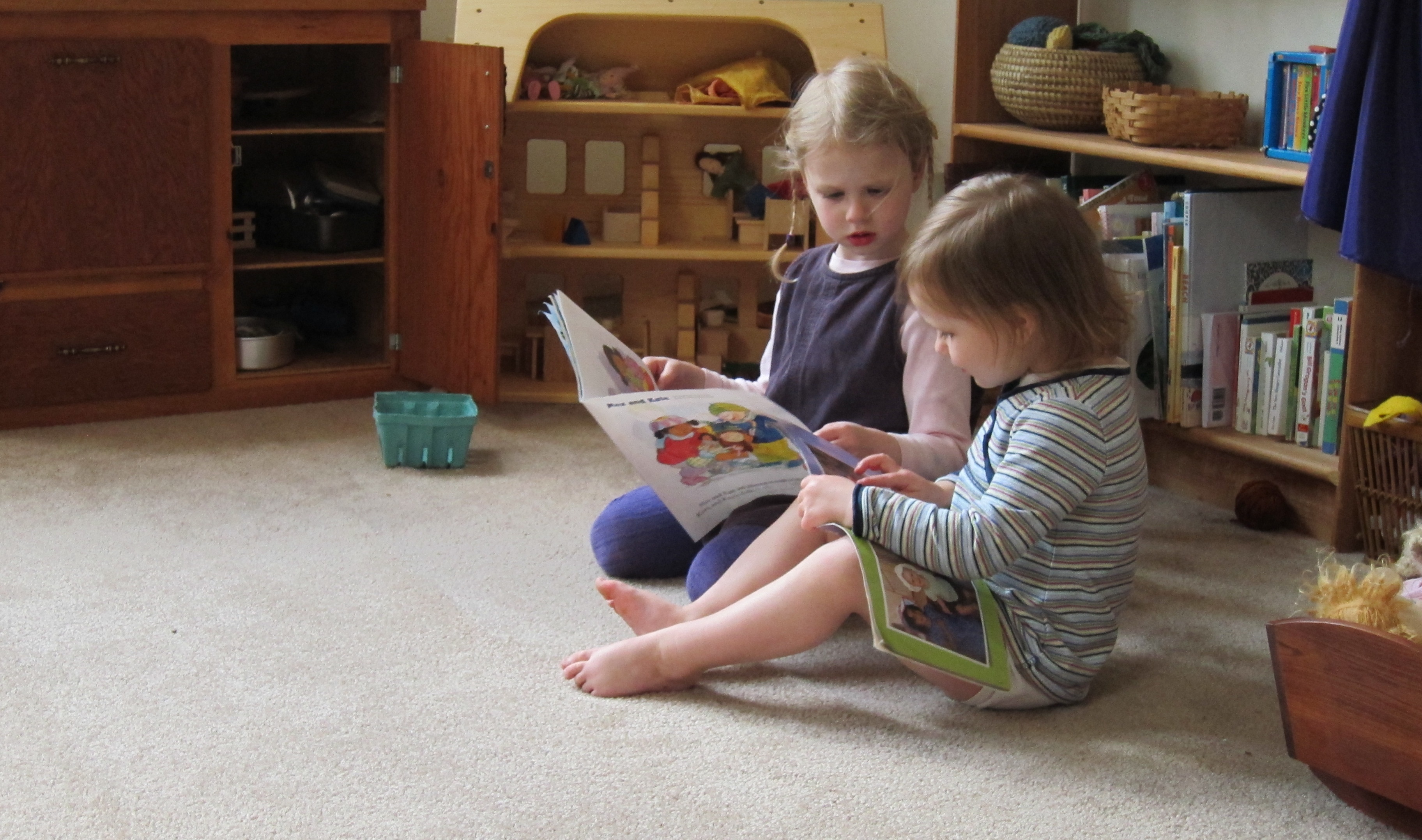More on Chores
/Earlier this week I wrote about Children and Chores. As I work towards including my children more in household chores, I’ve been thinking about how parents can set the expectation that everyone helps out in the home. It probably isn’t realistic for kids to always be compliant and cheerful about doing chores, but nagging and whining shouldn’t be the norm either.
Over the past couple of years, I’ve received some good advice from teachers and parents about what kind of chores are appropriate, how to introduce new chores, and how to make these chores part of the daily routine. I thought I’d share their wisdom.
Ms. Christine advised us that birthdays are a good time to introduce new chores. Kids are excited about growing up and giving them the responsibility of a new chore is a nice way to acknowledge their change in age. When Katherine turned five she took on clearing her dinner plate. Of the few things we ask her to do chore-wise, this is the one she rarely fusses about. Maybe it has to do with how we introduced it? I’m sure she’ll eventually catch on that a birthday chore is not exactly a birthday present, but for now we’ll take it!
There are the standard chores, like setting/clearing the table, taking out the garbage, and putting clean clothes away in drawers, but this year we’ve incorporated some more creative chores, most of which Katherine brought home from school:
- Polishing, which is really a fancy word for dusting. In Katherine’s classroom they “polish” the toys every Friday.
- Cobwebbing is another hit in Katherine’s classroom. Wrap a small towel around the end of a 4-5 foot long stick and run it along the ceiling and the wall corners to remove cobwebs.
- Sweeping. Siblings can also enjoy fighting over who gets to sweep and who gets to hold the dustpan.
- Washing windows using a spray bottle. I’m pretty sure kids will do anything if it involves a spray bottle.
 My kids like doing all of these things… once in a while. When they feel like it. But I’m interested in how to make chores an automatic part of the daily/weekly routine. People recommend a keeping a schedule: Monday is vacuum day, Tuesday is clean bathroom day, etc., but for me that is easier said than done. On nice days I’m more than willing to sacrifice a clean bathroom so we can spend more time outside, or if I’m in the mood to bake, I’m sure to choose chocolate over window washing!
My kids like doing all of these things… once in a while. When they feel like it. But I’m interested in how to make chores an automatic part of the daily/weekly routine. People recommend a keeping a schedule: Monday is vacuum day, Tuesday is clean bathroom day, etc., but for me that is easier said than done. On nice days I’m more than willing to sacrifice a clean bathroom so we can spend more time outside, or if I’m in the mood to bake, I’m sure to choose chocolate over window washing!
Maybe I need a more official looking schedule. It is currently crayoned in on our breakfast schedule (which is failed attempt to bring more variety to breakfast… all mom wants to prepare anyone wants is cereal.)
Modeling the work you want your kids to do and/or working along side them is ideal. Clara is much more inclined to help straighten up if I am doing it too, and it is much nicer to work together than to nag over and over from across the room.
Books can also help when introducing - or enforcing- chores. A favorite in our home is Ox-Cart Man, and I just started reading Little House in the Big Woods to Katherine. I think she is impressed with how Laura and Mary help Pa and Ma… Hopefully that will play in my favor.
Even though I know these are all good ideas that would help the children-chore situation in our home, some are hard to implement in reality. Having Katherine and Clara help isn’t the most efficient way to a clean house, and it is easier to shoo them out of the kitchen than to find ways for them to contribute. As far as making it part of the routine, I don’t always want to be tied to “polishing day,” and find it hard to stick to the schedule.
Tell me, what types of chores do your kids do? How do you implement chores in your home? What was it like in your home when you were a kid? I’d love to hear your suggestions…



















